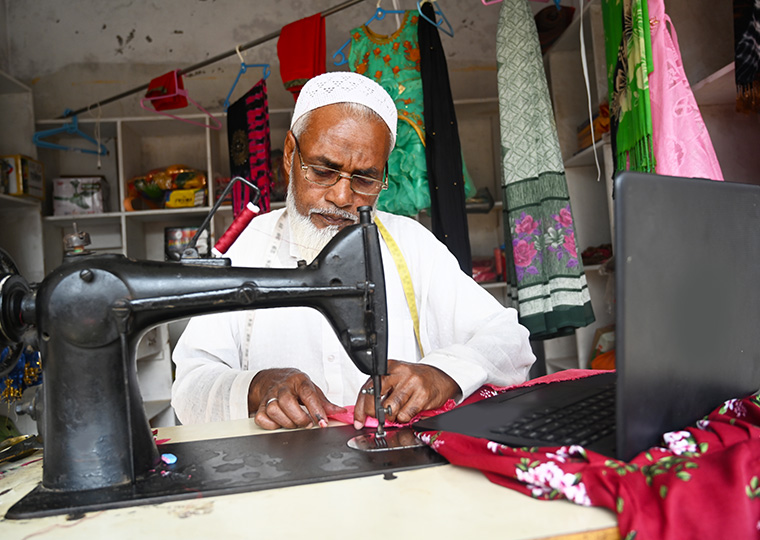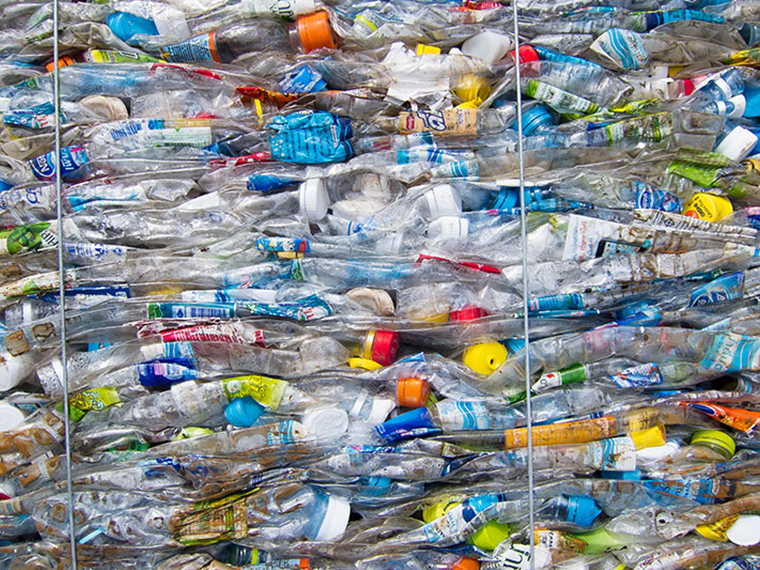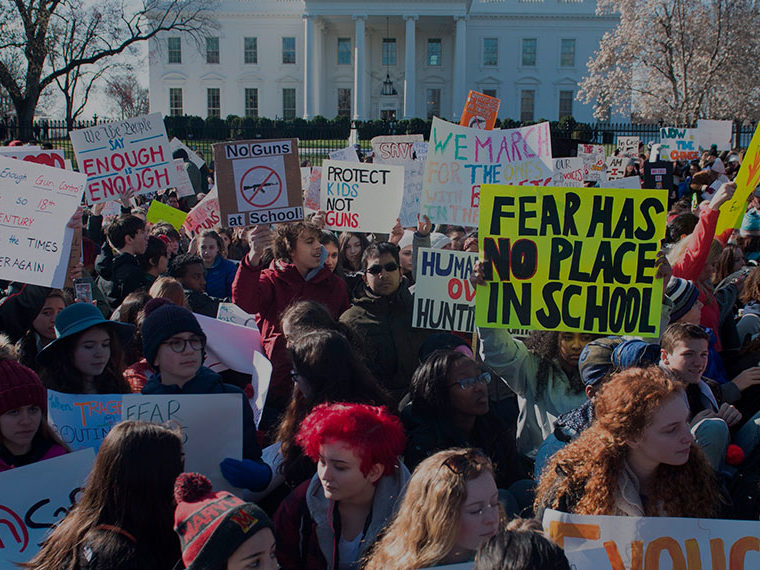Seeing global crises as ongoing, rather than episodic, and applying modern supply-chain management
The global response to a humanitarian crisis is often attended by a second disaster: a tsunami of wasteful or useless relief supplies that take up precious cargo space, place a burden on aid workers and create lingering environmental problems.
While larger international relief organizations budget and purchase goods for their operations efficiently, unsolicited contributions from individuals and companies less familiar with relief efforts can be wasteful. Used clothing and toys, for instance, piled up at the Polish border as the war in Ukraine began, and much was left to rot and clutter warehouses.
Only about 10% of unsolicited donations are considered high priority while 60% can be “completely useless,” researchers estimate. The waste and inefficiency, while sometimes unavoidable, reflect a humanitarian relief system focused on the rapid response to sudden-onset natural disasters but ill-equipped for a world where man-made disasters, once seen as episodic and rare, have become chronic. The average crisis, the United Nations estimates, now lasts for more than nine years.
Opt In to the Review Monthly Email Update.
The trouble goes beyond the surfeit of unneeded donations. Many of the short-term actions taken to save lives in a crisis often lead to long-lasting problems for the disaster-affected communities affected: Empty water bottles pile up, hypodermic syringes aren’t safely discarded, and solar batteries sicken children scavenging for valuable metals. What is needed, a paper forthcoming in Production and Operations Management suggests, are ways to make humanitarian operations more sustainable.
The paper — from UCLA Anderson’s Charles Corbett, Indiana University’s Alfonso J. Pedraza-Martinez and INSEAD’s Luk N. Van Wassenhove — acknowledges the “inherent tension” between the need to respond quickly in a crisis and what it takes to protect a community’s long-term health and well-being.
Humanitarian operations, the authors argue, can no longer ignore their long-term consequences. “Humanitarian operations take place in challenging contexts,” the authors write. “Addressing short-term needs to relieve acute suffering must be balanced against the long-term need to sustainably recover and strengthen local communities.”
The paper, growing out of a 2019 workshop at INSEAD involving practitioners and academics, reflects the latest research into sustainable and humanitarian operations. It suggests that to become more sustainable, humanitarian efforts need to take into account all phases of what researchers call the disaster management cycle: preparedness, response, recovery and mitigation. Aid groups need greater coordination, global organizations have to be more responsive to local needs, and supply chains need to be more efficient.
Unneeded Supplies
A powerful earthquake struck Port-au-Prince, Haiti, in January 2010, killing more than 200,000. Aid organizations and individual volunteers poured relief supplies into the country — a total of $13.5 billion in donations and pledges. But the efforts were frequently uncoordinated, and local officials and nongovernmental organizations were often ignored. Six months after the disaster, the Haitian government complained that less than 2% of the support had reached intended beneficiaries.
Some support that did arrive became a burden. Donors airlifted much-needed bottled drinking water to relieve an immediate shortage, but the empty half-liter bottles accumulated in giant piles and littered streets, canals and beaches, overwhelming the country’s waste-disposal systems.
Such a problem is common in disaster response. In March 2011, the strongest earthquake in Japan’s history struck off the coast of the country’s Tohoku region, triggering a tsunami that caused a partial meltdown at the Fukushima nuclear power plant. The disaster killed more than 18,000 and left 450,000 homeless.
There, too, disaster areas were saddled with unneeded donations. After the quake, 750 tons of bottled water was left unused. Advised by news reports that earthquake victims were suffering in the cold weather, donors rushed in supplies of blankets, even to areas that already had large stockpiles for just such an occasion. Although only a tiny fraction were needed in the first few weeks, blankets continued to pour in after the weather turned warm.
One way to keep nonpriority items from clogging disaster areas would be to sort and stage them closer to the source of the donations. Better communication about local needs would also help. So would more appropriate packaging; 10-liter water containers are better than half-liter bottles. In some cases, the best option would be for donors to give cash, which can then be used to buy the most-needed relief items and, if spent where the disaster occurred, help rebuild the local economy.
Housing Refugees
The civil war in Syria, which began in early 2011, has killed more than 350,000 civilians and combatants and has driven more than 13 million from their homes, the U.N. High Commissioner on Refugees estimated in 2021; more than 277,000 remain living in camps 10 years later.
As protracted crises have become the norm, camps for housing refugees from disasters — whether natural like earthquakes or man-made like the civil war in Syria — have become semi-permanent features on the landscape, often with unsustainable systems for transportation, sanitation, energy and safety.
The Za’atari camp in Jordan with a population of 80,000 is the largest home to Syrian refugees is the world. Seen as temporary when it opened, it recently marked its 10th anniversary. Tents that originally housed residents had been replaced by trailers, but even these are reaching the end of their life span and need repair.
Designing refugee camps from the beginning for long-term habitation can help make them more sustainable. A model is the Kalobeyei settlement, built outside an existing overcrowded camp in Kenya and opened in 2016. The country is home to a half million refugees from conflict in Somalia and South Sudan, and the neighboring Kakuma camp has operated since 1992.

Kalobeyei was designed from the beginning to be more sustainable. Developers conducted an environmental impact assessment, a hydrological survey and a study of the area’s suitability for agriculture. Rather than providing food supplies, which have led to food waste at other refugee camps, the World Food Programme introduced a digital cash program residents can use to buy food. Residents supplement food assistance with kitchen gardens. A 2020 study suggests that the approach resulted in greater self-reliance and better nutrition among settlement residents.
Local production
For decades, countries in the Horn of Africa — mainly Somalia, Ethiopia and Kenya — have suffered from repeated conflict and famine. To treat severely malnourished children, the UNICEF relief agency provides tons of “ready-to-use therapeutic food,” a peanut-based paste that can be stored for long periods and doesn’t need to be mixed with possibly tainted water. In response to a 2011-2012 famine that killed more than 280,000 in the region, UNICEF chartered as many as 15 flights to airlift supplies of RUTF — mostly produced in Europe and the U.S.
Beginning in 2010, UNICEF has supported development of local facilities to produce RUTF in Ethiopia, Sudan, Kenya and South Africa. By tapping these suppliers, the agency was able to respond to subsequent food crises without requiring airlifts and with no loss of response time, reducing costs and pollution all while creating local jobs.

Merging supply chains
Many humanitarian organizations provide both short-term operations for emergency relief and longer-term campaigns to assist development efforts. Because the demand, objectives and procedures for each are different, the organizations typically operate separate supply chains with separate warehouses.
Since speed is critical for emergency relief, the U.N. refugee agency stores emergency supplies in a handful of central warehouses close to where they’re most likely to be needed. For ongoing operations, such as supplying refugee camps, stocks can be held in the country or shipped directly from suppliers — the primary objective is to minimize costs.
Researchers suggest that the agency, by combining the two supply chains, could increase the number of central warehouses, placing them closer to potential hot spots, while reducing overall costs and response times. Stockpiles for continuing efforts can be used in a crisis, while leftover emergency supplies can be stored for longer-term needs.
Most work on making logistics and supply chains more efficient and sustainable has been designed to benefit industries in the developed world, while research to benefit humanitarian efforts and the developing world accounts for only a small fraction of the total. The workshop underlying the paper, Corbett says, reflects efforts by researchers (including by his co-authors Pedraza-Martinez and Van Wassenhove, pioneers in this area) to take the principles from commercial logistics and apply them to humanitarian operations. Professionalizing logistics in the humanitarian world has been a key improvement over the past decade or two, as the workshop revealed, but many opportunities for improvement remain in terms of making humanitarian relief more sustainable, both environmentally and socially. Despite noble intentions, valuable resources, including human talent, are not always put to the best possible use.
Featured Faculty
-
Charles J. Corbett
Professor of Operations Management and Sustainability; IBM Chair in Management
About the Research
Corbett, C., Pedraza-Martinez, A., and Van Wassenhove, L. (2022). Sustainable Humanitarian Operations : An Integrated Perspective. Production and Operations Management.






